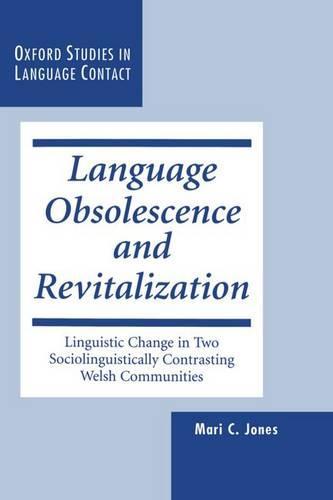Overview
The territorial contraction and speaker-reduction undergone by the Welsh language during the past few centuries has resulted in its categorization by many linguists as an obsolescent language. This study illustrates that, although it is undeniably showing some signs of decline, Welsh stands in marked contrast to many previously documented cases of language death. Against this backdrop of contraction a steady revitalization is taking place. Based upon extensive fieldwork in two sociolinguistically contrasting communities, this book is the first to examine the position and nature of contemporary Welsh with reference to both obsolescence-related developments and changes under way in the dialects. Jones focuses on immersion education, long heralded as the saviour of the language and, by examining the variety of Welsh being produced by immersion pupils, seeks to determine whether this claim is justified, or whether such pupils are in fact 'speaking immersion'. As well as discussing the recent linguistic change shown by contemporary Welsh within the language death framework, the author examines the ways in which the language has been standardized and their repercussions for language maintenance. By way of comparison these tensions and implications are also explored with reference to the other varieties of P-Celtic, namely Breton and Cornish. Series Information: Oxford Studies in Language Contact Series Editor: Professor Suzanne Romaine, Merton College, Oxford Series ISBN: 0-19-961466-0 Series Description: Most of the world's speech communities are multilingual, and contact between languages is thus an important force in the everyday lives of most people. Studies of language contact should therefore form an integral part of work in theoretical, social, and historical linguistics. This series makes available a collection of research monographs which present case studies of language contact around the world. As well as providing an indispensable source of data for the serious researcher, it contributes significantly to theoretical developments in the field.
Full Product Details
Author: Mari C. Jones (Lecturer in French, and Fellow, Lecturer in French, and Fellow, Peterhouse, Cambridge)
Publisher: Oxford University Press
Imprint: Oxford University Press
Dimensions:
Width: 16.20cm
, Height: 3.00cm
, Length: 24.30cm
Weight: 0.830kg
ISBN: 9780198237112
ISBN 10: 0198237111
Pages: 464
Publication Date: 09 April 1998
Audience:
Professional and scholarly
,
Professional & Vocational
Format: Hardback
Publisher's Status: Active
Availability: To order

Stock availability from the supplier is unknown. We will order it for you and ship this item to you once it is received by us.
Reviews
`For the linguist it is a fascinating (and detailed) synchronic study of the language as spoken by schoolchildren in two regions of Wales -- and it can be read at this level alone. But no one with any feel for the country and its language will be insensitive to the other, broader level ... This is a dense and many-faceted book that can be approached from many sides and from which any number of messages can be read. But through it all, Jones's conclusions are both perceptive and ominous.' Gareth King, Planet
This book is an extremely valuable contribution to the study of the sociolinguistics of language contact. Its exploration of language and dialect loss is data-rich from the detailed studies of Welsh and Breton undertaken by the author, and its importance for language planning in Wales cannot be over-emphasized. Martin J. Ball, Journal of Sociolinguistics




